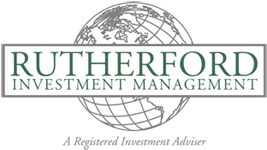Published January 9, 2012

In the first quarter of 2011, the S&P finished up 5 percent; however, hopes were soon dashed. The “Arab Spring” may have brought optimism to North Africa, but it created uncertainty in world politics. A strong earthquake and tsunami in Japan interrupted the global supply chain. The ongoing debt crisis in Europe brought extreme volatility, apprehension and aversion to our markets.
Political problems in Washington led to a downgrade of our debt, but more importantly dashed American and foreign belief that our political leaders could fashion a way forward. Our own housing problems were not solved and prices continued to decline. In the third quarter, the S&P fell 14.33 percent.
The S&P 500 index finished the year almost exactly where it started: At the end of 2010, the index stood at 1,257.64; at the end of 2011, it was 1,257.60. The Dow Jones industrial average was much better, rising 5.5 percent on the year, outdistancing all other equity indices worldwide.
This seemingly flat performance of the broad market masked the extreme volatility of the year. On 35 trading days, the market closed with a gain or loss of 2 percent or more, making 2011 the most volatile on record for stocks.
Last year, $6.3 trillion in value was wiped out of markets. The euro ended the year as the worst performing currency. The United Kingdom’s FTSE index fell 5.5 percent, while European blue chips fell 11 percent. The Nikkei lost 17.3 percent, Hong Kong lost 20 percent and Shanghai lost 22 percent. Oil prices zoomed up to $114 a barrel and then plunged to $76 a barrel. By the end of the year, it was at $100 per barrel.
As political and financial risk spread around the globe, the U.S. dollar and Treasurys resumed their historic roles as safe havens. Even after the U.S. suffered its first credit rating downgrade, investors pursued Treasurys and dollar-denominated assets.
It is notable that the reason given for the downgrade was not the U.S. economy, but the failure of political leadership. Political leadership also failed to solve the financial crisis in the euro zone, where debt problems at national and local levels threatened stability. Governments on both sides of the Atlantic lost their credibility.
As the dollar strengthened, prices of most commodities – including gold – dropped. Liquidity dried up in Europe and it became necessary for the U.S Federal Reserve to provide a massive loan of dollars to the European Central Bank so that the wheels of finance and credit could turn in Europe. The action took place to provide liquidity in Europe, but it was quickly labeled a bailout of Europe by the U.S.
Anyone who thought we would escape the European problems unscathed was simply not looking ahead. While it was necessary for the Fed to take this action, it certainly does look like a bailout.
But European bankers, acting like bankers everywhere, quickly borrowed all the money the ECB provided and immediately placed it back on deposit at the ECB. Losing money on every deposit, the bankers preferred to take those losses, rather than lend to each other or – perish the thought – to businesses.
This behavior echoed our bankers’ response to TARP – the huge government bailout in the U.S. – in which money was simply put into lock boxes and not lent as hoped. But while Europeans hoped that commercial banks would lend the money and buy some of the sovereign debt, there is little evidence that either is happening.
In the U.S., however, data shows a strengthening economy. Manufacturing activity increased in the Midwest. Seasonally adjusted unemployment claims declined, although that may have been because people were dropping out of the workforce.
The National Association of Realtors said that its index of pending home sales rose to the highest level in more than a year. The index, which measures the contracts to sell existing homes, is considered an indicator of future sales activity. The index rose for the third consecutive month and was up 5 percent over a year ago.
Other reports showed an increase in consumer confidence and greater retail sales. Through all these problems, the U.S. economy has muddled through – not always with style, but with progress. Most importantly, American consumers, who represent 70 percent of our GDP, continued to spend. The U.S. began to look like the least-bad economy.
By the end of 2011, in spite of all the problems ahead of us, this nascent recovery has begun to look like the real thing.
Originally posted in the Daily Journal of Commerce, Portland OR
